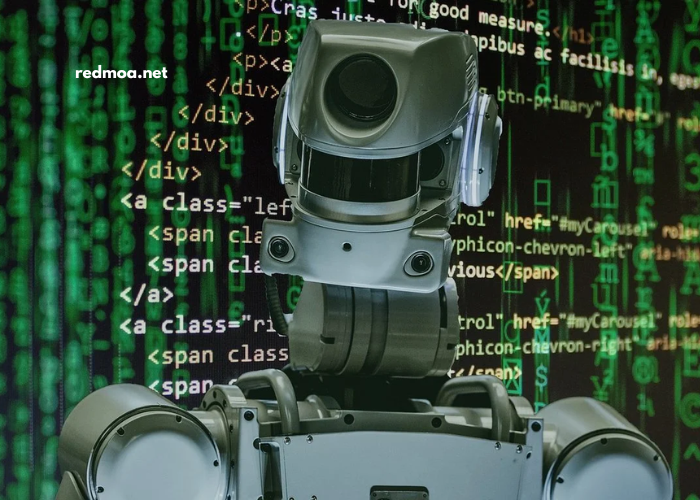As we enter the new decade, technology continues to evolve at a rapid pace, reshaping industries and daily life in profound ways. With advancements in artificial intelligence (AI), machine learning, blockchain, and more, the future looks both exciting and challenging. In this article, we’ll explore the top tech trends to keep an eye on as we move through the 2020s, offering insights into how these technologies are likely to impact businesses, economies, and societies across the globe.
The Rise of Artificial Intelligence and Machine Learning
AI: The Brain Behind Future Innovations
Artificial Intelligence (AI) has already begun to transform the way businesses and industries operate, and it’s set to play an even more significant role in the coming years. AI encompasses a range of technologies, including machine learning (ML), natural language processing (NLP), and computer vision, which enable machines to perform tasks traditionally done by humans.
In the new decade, AI will be integrated across various sectors, including healthcare, finance, manufacturing, and customer service. For instance, AI-powered chatbots and virtual assistants will become even more advanced, providing seamless interactions for customers. In healthcare, AI will enhance diagnostics, personalize treatments, and streamline administrative tasks.
Machine Learning: Learning from Data
Machine learning, a subset of AI, will continue to drive advancements in automation, predictive analytics, and data-driven decision-making. By analyzing vast amounts of data, ML algorithms can detect patterns and make predictions without being explicitly programmed. This trend is already transforming industries such as e-commerce, logistics, and marketing, where ML is used for personalized recommendations, inventory management, and targeted advertising.
As ML continues to evolve, we can expect more sophisticated applications in areas like autonomous vehicles, cybersecurity, and precision agriculture.
Blockchain Technology: Beyond Cryptocurrency
Blockchain’s Growing Impact
While blockchain is often associated with cryptocurrencies like Bitcoin, its potential goes far beyond the financial sector. Blockchain is essentially a decentralized digital ledger that allows for secure and transparent record-keeping without the need for intermediaries. This technology has the power to revolutionize industries such as supply chain management, voting systems, and even healthcare.
In supply chains, blockchain can provide greater transparency by tracking the origin of products, verifying their authenticity, and ensuring ethical sourcing. For example, blockchain could be used to trace the journey of food from farm to table, ensuring food safety and reducing fraud. In healthcare, blockchain could streamline patient records, making them more secure and accessible while protecting privacy.
Smart Contracts and Decentralized Finance (DeFi)
One of the most exciting developments within blockchain technology is the rise of smart contracts. These self-executing contracts automatically enforce the terms of an agreement without the need for intermediaries. Smart contracts are already being used in areas such as real estate, insurance, and legal agreements, and their usage is expected to increase significantly in the coming years.
Furthermore, decentralized finance (DeFi) is reshaping the financial landscape by offering blockchain-based alternatives to traditional banking services. DeFi platforms enable users to lend, borrow, and trade assets without relying on central banks or financial institutions. This shift could democratize finance, making it more accessible to individuals worldwide.
5G Technology: The Future of Connectivity
Faster Speeds and Lower Latency
The rollout of 5G networks is one of the most anticipated tech developments of the decade. With faster speeds, lower latency, and greater capacity than 4G, 5G promises to revolutionize how we connect to the internet. This will not only improve mobile internet experiences but also enable the growth of the Internet of Things (IoT), autonomous vehicles, and smart cities.
In the next decade, 5G will enable real-time communication between devices, allowing for the creation of smart environments. For example, 5G-powered smart cities could optimize traffic flow, reduce energy consumption, and improve public safety through real-time data collection and analysis.
Impact on Industries
Industries such as healthcare, gaming, and entertainment will see massive benefits from 5G. In healthcare, 5G will enable remote surgeries, telemedicine, and real-time patient monitoring. For gamers, 5G promises lag-free gaming experiences and cloud gaming that allows for high-quality graphics and seamless gameplay. Additionally, 5G will support augmented reality (AR) and virtual reality (VR) applications, paving the way for new forms of entertainment and interactive experiences.
The Internet of Things (IoT): A Connected World
Expanding the IoT Ecosystem
The Internet of Things (IoT) refers to the network of connected devices that can communicate and share data with each other. In the new decade, IoT will continue to expand, with more devices becoming interconnected, from smart home products to industrial machinery. As 5G networks roll out, IoT devices will become even more responsive and efficient, creating new possibilities for automation and data analysis.
Smart homes will become more intuitive, with IoT-enabled devices like refrigerators, thermostats, and security systems communicating with each other to optimize energy usage and enhance convenience. Additionally, IoT will play a crucial role in industries such as agriculture, where sensors and drones can monitor crop health, soil conditions, and irrigation systems.
IoT Security Concerns
As the IoT ecosystem grows, so does the need for robust cybersecurity measures. With more devices connected to the internet, the potential for cyberattacks increases, making it essential to secure IoT networks and data. Companies and governments will need to invest in cybersecurity infrastructure to protect sensitive information and ensure the privacy of users.
Virtual Reality (VR) and Augmented Reality (AR): Immersive Experiences
The Evolution of VR and AR Technologies
Virtual Reality (VR) and Augmented Reality (AR) technologies have already made a significant impact in industries like gaming and entertainment, but their potential reaches far beyond these sectors. In the new decade, VR and AR will become increasingly integrated into education, healthcare, retail, and even remote work.
In education, VR will offer immersive learning experiences that allow students to explore historical sites, conduct virtual science experiments, or simulate complex scenarios. In healthcare, AR can assist surgeons by overlaying critical information during procedures, while VR can be used for pain management and rehabilitation.
AR and VR in Retail and Marketing
Retailers will also use AR to enhance the shopping experience. For example, consumers will be able to try on clothes virtually or visualize how furniture looks in their homes using AR apps. In marketing, VR will allow companies to create more engaging advertisements, offering customers a fully immersive brand experience.
Quantum Computing: A Game-Changer for Problem Solving
Quantum Computing’s Potential
Quantum computing is still in its early stages, but it has the potential to revolutionize fields like cryptography, artificial intelligence, and drug discovery. Unlike classical computers, which process information in binary form (0s and 1s), quantum computers use quantum bits (qubits) that can represent multiple states simultaneously, allowing them to solve complex problems at unprecedented speeds.
In the coming decade, quantum computing will likely make breakthroughs in areas such as material science, energy storage, and optimization problems. For instance, quantum computers could simulate molecular interactions to accelerate the development of new drugs, or help optimize supply chains in real-time.
Overcoming Challenges
Despite its promise, quantum computing faces significant technical challenges, such as qubit stability and error correction. However, with continued research and investment, quantum computing could be a game-changer for a wide range of industries.
Sustainability and Green Technology: Tech for a Better Planet
Clean Tech Innovations
As environmental concerns become more pressing, technology will play a crucial role in combating climate change and promoting sustainability. In the new decade, green technologies such as renewable energy, electric vehicles (EVs), and energy-efficient devices will continue to evolve.
Solar and wind power, which are already leading sources of renewable energy, will become even more efficient and cost-effective. Additionally, innovations in energy storage will enable more widespread use of renewable energy by addressing the intermittent nature of solar and wind power.
EVs and Sustainable Mobility
Electric vehicles (EVs) will play a significant role in reducing carbon emissions and curbing the impact of transportation on the environment. As battery technology improves, EVs will become more affordable, with longer ranges and faster charging times. In the coming years, we can expect to see a widespread shift toward EVs, with more cities implementing EV-friendly infrastructure and incentives.
Conclusion: Embracing the Future of Technology
The tech trends of the new decade promise to reshape industries, improve lives, and solve some of the world’s most pressing challenges. From artificial intelligence and blockchain to 5G, IoT, and quantum computing, the possibilities are endless. However, with great technological advancements come new challenges, such as cybersecurity risks and ethical considerations.
As we move into this exciting era, it’s essential for businesses, governments, and individuals to stay informed, adapt to emerging trends, and harness the power of technology to create a better and more sustainable future. The next decade will undoubtedly be defined by innovation and transformation, and those who embrace these changes will be well-positioned to thrive in a rapidly evolving world.





